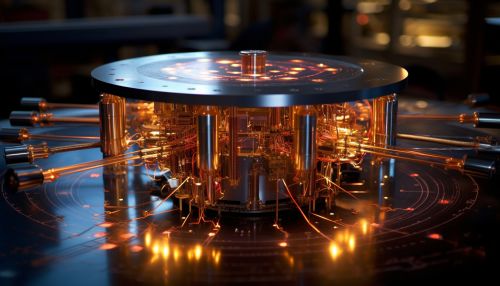The Physics of Quantum Superconductors
Introduction
Quantum superconductors, also known as quantum superconductors, are a class of materials that exhibit superconductivity at the quantum mechanical level. This means that they can conduct electric current without any resistance, a phenomenon that is explained by the principles of quantum mechanics.


Principles of Quantum Superconductivity
Quantum superconductivity is a macroscopic quantum phenomenon that is governed by the laws of quantum mechanics. It is characterized by the formation of Cooper pairs, which are pairs of electrons with opposite momentum and spin that move together through a superconductor. This pairing mechanism is facilitated by the attractive interaction between electrons mediated by the exchange of phonons, which are quanta of lattice vibrations.
The formation of Cooper pairs is described by the BCS theory, named after its developers John Bardeen, Leon Cooper, and John Robert Schrieffer. According to this theory, when an electron moving through a lattice causes a distortion that attracts other electrons, leading to the formation of Cooper pairs. These pairs move through the lattice without scattering off impurities or lattice defects, resulting in zero electrical resistance.


Quantum Coherence in Superconductors
One of the most intriguing aspects of quantum superconductors is the phenomenon of quantum coherence. This is a state in which all Cooper pairs in a superconductor behave as a single quantum entity, despite the fact that they are made up of a large number of individual particles. This state of coherence is what allows superconductors to carry current without resistance.
Quantum coherence in superconductors is a manifestation of the quantum entanglement principle. In superconductors, the entangled state of the Cooper pairs leads to a state of macroscopic quantum coherence, where the wave functions of all the Cooper pairs overlap and behave as a single quantum state.


Types of Quantum Superconductors
There are several types of quantum superconductors, classified based on their critical temperature (the temperature below which they exhibit superconductivity) and the mechanism of superconductivity.
1. High-temperature superconductors: These are materials that exhibit superconductivity at temperatures higher than the traditionally accepted limit for superconductivity. The mechanism of superconductivity in these materials is still a subject of intense research.
2. Low-temperature superconductors: These are materials that exhibit superconductivity at very low temperatures, typically close to absolute zero. The superconductivity in these materials is well explained by the BCS theory.
3. Unconventional superconductors: These are materials that exhibit superconductivity through mechanisms that are not well understood or explained by the BCS theory. This category includes heavy-fermion superconductors, organic superconductors, and others.


Applications of Quantum Superconductors
Quantum superconductors have a wide range of applications in various fields, thanks to their unique properties. Some of the most common applications include:
1. Magnetic levitation: Superconductors can levitate above a magnetic field, a property that is used in magnetic levitation trains.
2. Quantum computing: Superconducting circuits are a leading platform for the development of quantum computers, which promise to revolutionize computing by performing calculations that are currently impossible for classical computers.
3. Medical imaging: Superconducting quantum interference devices (SQUIDs) are used in magnetic resonance imaging (MRI) and other medical imaging techniques.


